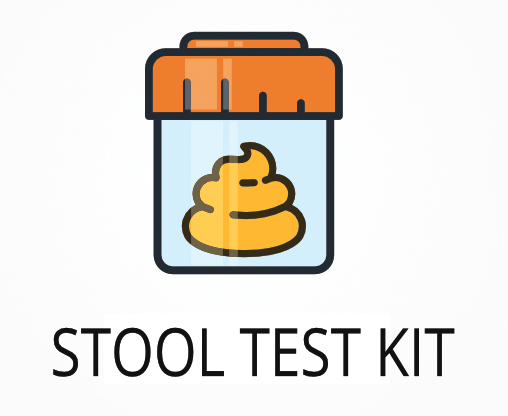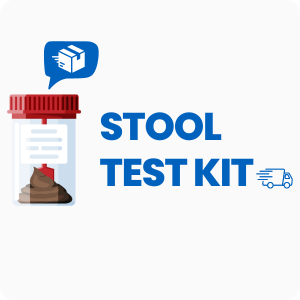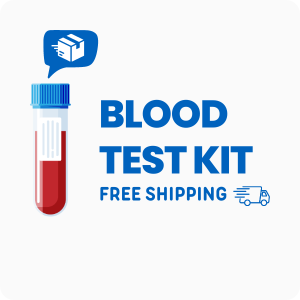Ordering the Comprehensive Digestive Stool Test + Parasite 2.0 Test | Europe
Ordering the Comprehensive Digestive Stool Test + Parasite 2.0 Test helps identify specific digestive and gut issues by measuring bacteria, yeast, parasites, and inflammation markers in your stool. This test can show if you have imbalances in your gut, hidden infections, or problems with digestion that may not be found with other tests. Interestingly, this test can also detect certain markers that may point to early signs of gut inflammation before symptoms become obvious.
When ordering this test, you gain access to detailed information about your gut health:
- Detects both common and uncommon parasites that may cause stomach problems.
- Measures levels of good and bad bacteria to help guide probiotic or dietary changes.
- Checks for yeast and fungal overgrowth, such as Candida, which can cause bloating and fatigue.
- Assesses digestive enzyme function, showing if your body is breaking down food properly.
- Identifies inflammation markers that can help track conditions like Crohn’s disease or ulcerative colitis.
Who Should Consider Digestive and Parasite Stool Analysis
People who have ongoing stomach pain, frequent bloating, or changes in their bowel habits may benefit from this test. For example, someone who has tried different diets and still struggles with diarrhea and tiredness might find out if a hidden infection or food intolerance is causing their symptoms.
Ordering this test may also be helpful in these situations:
- Long-term constipation or diarrhea that does not improve with simple changes.
- Unexplained weight loss or trouble gaining weight despite eating enough.
- Recurring yeast infections or skin rashes that do not respond to treatment.
- Family history of celiac disease or inflammatory bowel conditions.
- Recent travel to areas where water or food safety is a concern, even if symptoms are mild or delayed.
Testing can help pinpoint the exact cause of symptoms like gas, bloating, or stomach pain by showing if there are infections, imbalances, or inflammation in the gut. Delaying this test could mean missing early signs of gut problems, which may make symptoms harder to manage later. To get clear answers about your digestive symptoms, consider ordering this test.
Preparing for Stool and Gut Microbiome Testing
Fasting is not required for this stool test, but you should avoid collecting a sample during your menstrual period or if you have used a rectal suppository in the last 48 hours. Make sure to carefully follow any instructions your doctor or healthcare provider gives you, as these steps help ensure your sample is collected and shipped correctly.
Labs Included When Ordering Your Comprehensive Digestive Stool Test + Parasite 2.0 Test
| Test Name | Reference Range | What This Marker Means | Low and High Levels of Comprehensive Digestive Stool Test + Parasite 2.0 Test |
|---|---|---|---|
| Gut Flora and Bacteria | |||
| Beneficial flora (Bifidobacterium, E. coli, Lactobacillus) | Present in healthy balance | These bacteria help digest food, protect against harmful germs, and support the immune system. Balanced levels are important for regular digestion and less stomach upset. | High levels mean there may be an overgrowth, which can cause gas or bloating.
Low levels mean your gut may not have enough good bacteria, making it easier for bad germs to grow. |
| Imbalanced and dysbiotic bacteria | Not detected or within normal limits | These are bacteria that can upset the balance in your gut. Too many can lead to stomach pain, diarrhea, or other digestive problems. | High levels mean your gut bacteria are out of balance, which can cause symptoms.
Low levels mean your gut bacteria are balanced. |
| Bacteriology EIA (Campylobacter, E. coli) | Not detected | This test checks for harmful bacteria that can cause food poisoning or stomach infections. Finding these bacteria can explain sudden stomach pain or diarrhea. | High levels mean a possible infection that may need treatment.
Low levels mean no infection is found. |
| Shiga-like Toxin | Not detected | This toxin is made by some E. coli bacteria and can cause severe stomach cramps and diarrhea. It is important to know if this toxin is present. | High levels mean a dangerous infection may be present.
Low levels mean the toxin is not found. |
| Parasites and Yeast | |||
| Parasitology EIA (Cryptosporidium, Giardia lamblia, Entamoeba histolytica/dispar) | Not detected | This test looks for parasites that can cause diarrhea, stomach pain, and weight loss. It is especially useful after travel or unexplained symptoms. | High levels mean a parasite infection is present.
Low levels mean no parasites are found. |
| Mycology (yeast and fungi) | Not detected or within normal limits | Checks for yeast like Candida, which can cause bloating, gas, and tiredness. Overgrowth can happen after antibiotics or with certain diets. | High levels mean yeast overgrowth, which may cause symptoms.
Low levels mean yeast is not a problem. |
| Ova (parasite eggs) | Not detected | Finding parasite eggs helps confirm an infection that may not show up with other tests. This is important for people with ongoing stomach issues. | High levels mean a parasite infection is likely.
Low levels mean no eggs are found. |
| Parasites Elastase 1 | >200 | Elastase 1 is an enzyme made by the pancreas. It shows if your body is making enough enzymes to digest food properly. | High levels mean normal enzyme production.
Low levels mean your pancreas may not be making enough enzymes, leading to poor digestion. |
| Digestive Function and Inflammation | |||
| Pancreatic function | Within normal limits | Shows if your pancreas is working well to help break down food. Poor function can cause stomach pain, weight loss, or greasy stools. | High levels mean normal pancreatic function.
Low levels mean your pancreas may not be working well. |
| Putrefactive SCFA | Within normal limits | Short-chain fatty acids (SCFA) are made when good bacteria break down fiber. They help keep the gut lining healthy and reduce inflammation. | High levels mean too much protein is being broken down, which can irritate the gut.
Low levels mean not enough fiber is being digested. |
| Eosinophil Protein X | <50 | This marker shows if there is inflammation in the gut, often linked to allergies or certain infections. High levels can point to food reactions or parasites. | High levels mean possible inflammation or allergic reaction.
Low levels mean no sign of inflammation. |
| Calprotectin | <50 | Calprotectin is a protein that rises when there is inflammation in the gut. It helps track conditions like Crohn’s disease or ulcerative colitis. | High levels mean active inflammation in the gut.
Low levels mean no sign of inflammation. |
| Gut Metabolites and Other Markers | |||
| Beneficial SCFA | Within normal limits | These fatty acids help feed the cells in your gut and keep the lining strong. They are made by good bacteria from fiber in your diet. | High levels mean your gut bacteria are active and healthy.
Low levels mean your gut may not be getting enough fiber or good bacteria. |
| n-Butyrate | Within normal limits | n-Butyrate is a type of short-chain fatty acid that helps reduce inflammation and supports gut lining repair. It is made by certain good bacteria. | High levels mean your gut bacteria are making plenty of this helpful acid.
Low levels mean your gut may not be healing as well as it should. |
| pH | 6.0-7.2 | pH shows how acidic or alkaline your stool is. The right balance helps good bacteria grow and keeps harmful germs away. | High levels mean your stool is more alkaline, which can affect bacteria balance.
Low levels mean your stool is more acidic, which can also affect digestion. |
| Beta-glucuronidase | <4.0 | This enzyme is made by some gut bacteria. High levels can affect how your body gets rid of toxins and hormones. | High levels mean your body may be recycling toxins or hormones.
Low levels mean normal breakdown and removal of waste. |
| Bile acids (Lithocholic acid, Deoxycholic acid, LCA/DCA ratio) | Within normal limits | Bile acids help digest fats. The balance between these acids can show if your liver and gut are working together as they should. | High levels mean your body may not be absorbing fats well.
Low levels mean normal fat digestion. |
| Anti-Microbial Sensitivities (prescriptive and natural agents) | Sensitive/Resistant | Shows which medicines or natural products can help treat any bacteria or yeast found. This helps guide the best treatment plan. | High levels mean the germ is resistant to treatment.
Low levels mean the germ is sensitive and can be treated easily. |
Reference ranges may change slightly as labs update their methods or as new research becomes available. Always check your report for the most current values.
Comprehensive Digestive Stool Test + Parasite 2.0 FAQ
Is there Comprehensive Digestive Stool Test + Parasite 2.0 testing near me?
This is a home test kit, so you can collect your stool sample at home and send it to the lab using the included shipping materials; check the draw location link at the top of the page for more details. For people with ongoing digestive symptoms, having a convenient way to collect and send your sample can make it easier to get answers without extra travel or waiting.
How do I interpret the test results?
While your treating physician should review your results, we also offer a one-on-one test results review with our clinical team to help you understand your report and next steps.
What is the cost of the test?
The price you see includes standard shipping to your address and return shipping to the lab, but draw fees may apply. Ordering this test can help you find the cause of symptoms like bloating or diarrhea, so you can start the right treatment sooner.
How often should I retest?
It is usually recommended to retest every 6-12 months, especially if you are treating an infection, making changes to your diet, or monitoring a chronic digestive condition. Regular testing helps track progress and shows if your treatment plan is working.
How accurate is the test?
This test uses enzyme immunoassay (EIA), culture, and PCR methods to detect bacteria, parasites, and other markers, with a specificity of 98% and sensitivity of 95%. TrueHealthLabs.com partners with CLIA-certified and CAP-certified laboratories to uphold rigorous testing standards for dependable results.
Important Notes
READ: These tests are available for European countries only.
Medical Review Board
Reviewed by Jeff Donohue M.D. from Body Logic and Brady Hurst DC, CCCN. Written by True Health Lab’s team of editorial health contributors.
Disclaimer: This information is for educational purposes only and not intended as medical advice. Consult your healthcare provider for personalized guidance.
Why Customers Trust True Health Labs - What People are saying
Also rated 4.6 out of 5 based on 3452 ShopperApproved reviews- See all TrueHealthLabs.com reviews.








